OpenMusic Tutorials
Prev| Chapter 8. OM Music objects Chord-seq and Voice| Next
Tutorial 25: Voice II
More on rhythm trees
Topics
Generating more complicated rhythm trees.
Key Modules Used
The Concept:
In this example, we will generate rhythm trees using an abstraction (red patch) which we will call ‘Rtm constrct’. This patch will take three arguments, all of them lists. The first two lists will define the time signature of each measure (the first being a list of numerators and the second of denominators), and the third list will be the rhythmic structures contained in these measures in the form of a list of lists.
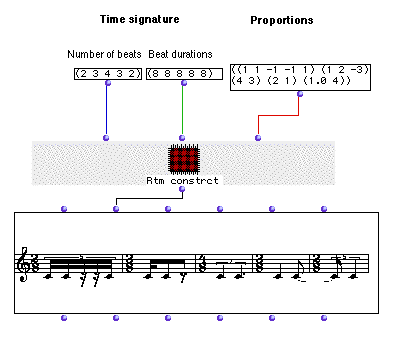
The Patch:
Here’s the interior of the abstraction:
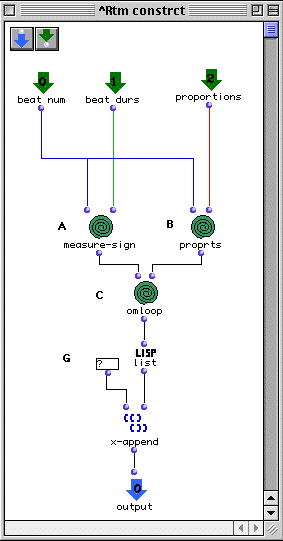
Inside this patch three omloops will construct the ‘leaves’
of our rhythm tree.
The first omloop will produce time signature:
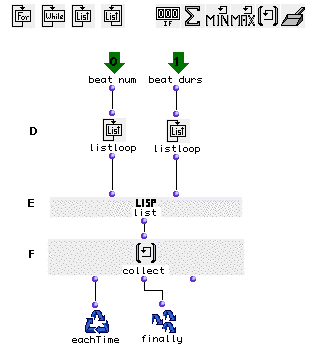
Each output will be enumerated using listloop (D). Each
beat number will be appended to a list with its corresponding beat duration
using list (E). The results will be collected by
collect (F) and then passed to the output.
At (B), ‘proprts’ will return measures. (This loop is the same as ‘measure- sign’ loop, except that it pairs the measure lengths (time signature numerators) with the lists of rhythmic structure.
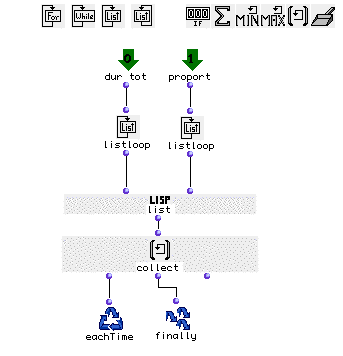
At (C), another omloop will take the elements of the lists
produced by the other omloops and pair them off to form the
measures. Note that we must put each of the measure lists into another set
of parentheses with list because each measure must be a list of
groups and we only have one group per measure.
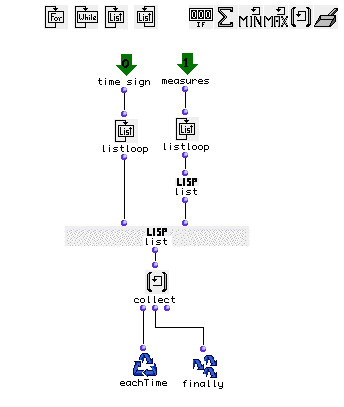
Outside of the omloops at (G) we add the obligatory question
mark, which we append to the list with x-append.
After connecting our abstraction to the second input of the Voice, we will obtain this rhythm:

Prev| Home| Next
—|—|—
Tutorial 24: Voice I| Up| Tutorial 26:
Editing rhythm with the Voice graphic editor